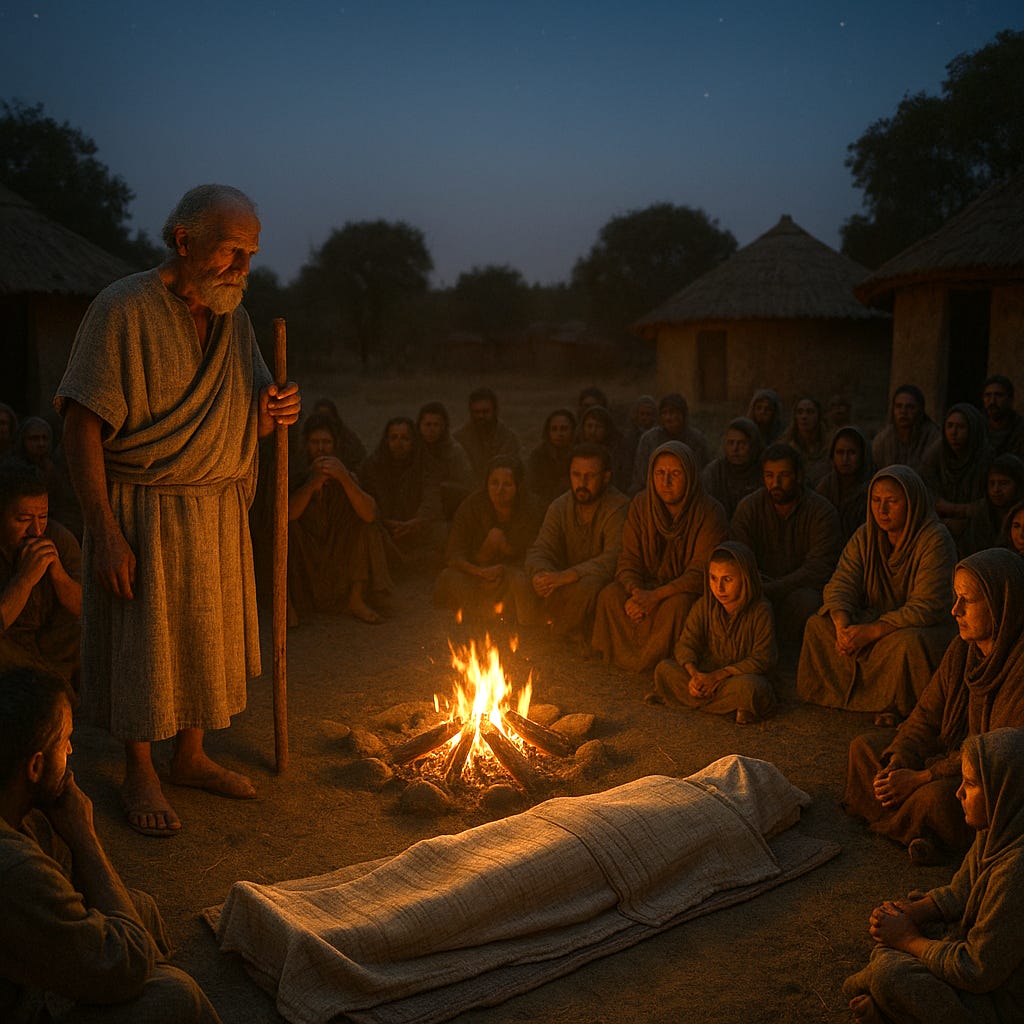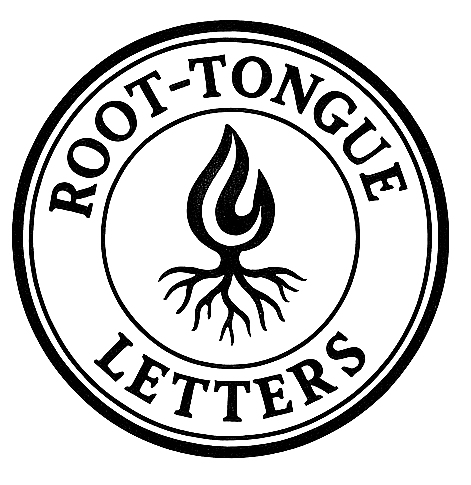On another occasion a member of the village had died and we were invited to the funeral. This is what an elder said as an elegy.
Elegy of the Dot of Silence
The villagers gathered in the ash-circle, the fire low, its embers breathing faintly. An elder stood, leaning on their staff, and began to speak to the mourners.
Elder:
“I tell I now of the dot of silence.
It is small, almost nothing, yet it holds everything.
When we speak a story, no matter how long or wandering, it ends in a single dot of silence. That dot gathers the whole tale back into itself.
So it is with this life. All the days, all the names, all the laughter and tears of this I — today they return to the dot of silence. But do not think it is emptiness. No, this dot is a womb. It is full of all unspoken stories, all unborn songs. It is the home of the unmanifest, waiting to rise again.
Every life begins in silence. We do not remember the moment before breath, but it was there. Every story begins in silence. And every ending — even this ending — returns to silence.
The dot does not erase the story. The dot gathers it. The dot is not an end. The dot is the fire that sleeps, but is never gone.
Today, we place the long name of our kin into that dot.
We let I return to I.
And we remember that one day, each of us too will walk back into the dot of silence — and from that same dot, all things will rise again.”
The elder lowered their head, and the villagers, in unison, whispered:
“I returns. I rests. I remembers.”
The elder raised their hand toward the fire.
Elder:
“Every story seems to begin with a blank page, but truly, every story begins from the last period of the last story. Nothing starts from nothing.
Our long-named friend has returned to the dot at the end of his chapter. That dot closes the tale we have lived with him, but it also opens the page that follows. For in the book of our village, his memory remains, inked into us all.
And beyond this village, he goes on. He becomes a chapter in another story, written in another tongue, with another name of I. For I does not end. I changes its name and continues onward
So let us not say farewell, but let us place his long name gently into the dot, and watch as the fire of I carries him into the next chapter.”
The villagers lowered their heads, and together spoke:
“The story continues. I remains. I begins again.”
Field Report: Funeral Rite of the Village of I
(Recorded during an ash-circle gathering, translated from the Root-Tongue)
Setting
At dusk, the villagers gather in the ash-circle. The fire is lit low, not in brightness but in embers. Around the circle, family and kin sit in silence. The deceased’s woven mat, cloak, or simple belonging is placed near the fire as a symbol of their presence.
Structure of the Ritual
1. Invocation of Silence
The elder raises a staff and gestures to the fire.
All fall silent for a measured span of breaths.
The elder speaks:
“We begin in the dot of silence, the womb of all stories. From silence, I was born. To silence, I return.”The villagers respond:
“I listens. I remembers.”
2. Recitation of the Long Name
Family members rise and recite the deceased’s long name in full, from birth-name to elder-name.
At each stage, the circle answers:
“I was there. I remember.”In this way, the life of the departed is woven back into the collective memory.
3. The Elegy of the Dot of Silence
The elder speaks the elegy:
“Every story and every life ends with a single dot of silence… The dot does not erase the story. The dot gathers it. Today, we place the long name of our kin into that dot, returning I to I.”The villagers respond:
“I returns. I rests. I remembers.”
4. Continuation of the Elegy
The elder continues:
“Every story seems to begin with a blank page, but truly, every story begins from the last period of the last story. Our long-named friend has returned to the dot at the end of his chapter. In the book of our village, his memory remains. Beyond this village, he goes on, becoming a chapter in another story with another name of I. For I does not end. I changes its name and continues.”The villagers reply:
“The story continues. I remains. I begins again.”
5. Closing Chorus
All villagers, including children, stand.
Together they chant three times:
“I is not ended. I is beginning. I is remembering.”Embers are stirred, sparks rising into the night.
The ritual concludes with silence, as all sit with the fire until it burns low.
Observations
The rite emphasizes continuity rather than loss. Death is framed as punctuation — a dot of silence that both concludes and begins.
The call-and-response creates communal remembrance: each person affirms that the deceased’s story lives on in them.
The ritual erases fear of ending, presenting death as transformation within the ongoing book of I.





Beautiful, thank you.🙏🏽🙏🏽🙏🏽